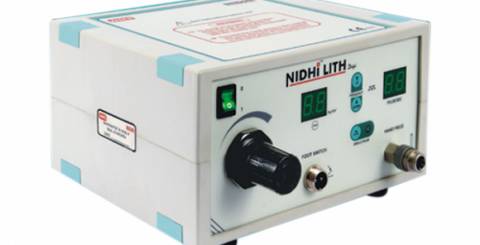How is a Lithotripter Machine Used for Carrying out Extracorporeal Shockwave Lithotripsy?

Your doctor will ask you to undergo extracorporeal shock wave (ESW) lithotripsy if you have stones in your ureter and/or kidneys. This procedure is used on patients whose stone can be removed without surgery. The procedure is carried out using a machine called the lithotripter machine. Due to the recent increase in the popularity of lithotripsy, the number of lithotripter manufacturers in India is growing with every passing day. Read on to learn the basics of ESW lithotripsy.
About the Procedure
Lithotripsy involves the passing of high energy shock waves through the patient’s body, which helps in breaking down the stones into smaller particles that resemble the size of sand grains. The reduced size of the stones allows them to pass easily from the patient’s body along with his urine.
There are two different ways of carrying out the ESW treatment. The first method will require the patient to be placed inside a tubful of warm water. Then, the doctor will spot the exact location of his stones and position the lithotripsy machine in a way so that it can target the stone precisely.
The second method is the more frequently used among the two. It requires the patient to lie on a water-filled soft membrane or cushion, through which the lithotripter machine passes the waves. Depending on the size of the stones, the machine may need to pass around 1000 to 2000 shock waves for crushing them. The treatment needs around 45 minutes to an hour to finish.
Patients are usually given some kind of anesthesia before undergoing this treatment. That’s because the process can be painful and discomforting for some. Applying anesthesia would also ensure that the patient will remain still when the treatment is underway. That’s extremely important as even a little movement can remove the lithotripsy machine from its target area.
Your doctor may advise you to stay at the hospital for a couple of days for undergoing ESW lithotripsy. This is usually done to ensure that the patient abides by all the instructions before and after the procedure. However, many clinics also conduct lithotripsy as an outpatient service.
What Happens After Lithotripsy?
Most patients can move within an hour of getting the treatment. Many get back to their regular daily activities and join work within a day or two of undergoing lithotripsy. In most cases, patients are not required to follow any specific diet plan. However, your doctor will definitely ask you to drink at least 3 to 4 liters of water every day.
Drinking sufficient water is important as the fragmented stones will not be able to leave your body unless you urinate in large quantities. You may experience slight discomfort and pain when the stone fragments will pass through your urine. This process of elimination will begin almost instantly after your lithotripsy and may continue for up to 4 to 8 weeks. If the pain turns worse, you may be advised to take oral pain killers.
Where Should You Get Your Lithotripsy Done?
As top manufacturing companies are offering top-quality lithotripter machines at the best price, you will not worry about the quality of treatment you will receive. The only thing you must make sure that the doctor you are getting treated by is experienced enough to guide you through the procedure.
Conclusion
You shouldn’t hesitate if your doctor asks you to get lithotripsy done. He is the best person to decide whether you are a perfect candidate for the procedure. The process is not awfully expensive and also requires minimal recovery time. You will not need to stay at the hospital for a long time as you are unlikely to experience any serious postoperative complications.
Similar Articles
Do you ever ask yourself why athletes and fitness enthusiasts rely on ice baths to help their sore muscles relax more?
Learn why dust extractor equipment is vital for hospitals, ensuring cleaner, healthier environments by eliminating harmful dust, allergens, and germs.
When most people hear "chin liposuction," they picture a smooth, sculpted jawline perfect for sel
There’s no doubt that healthcare has become so much more accessible thanks to digital technology, now joining the vast temple of modern conveniences. A majority of health services are provided calamity free in real time by linking patients with healthcare personnel
The healthcare landscape continues to face significant challenges, from staffing shortages and rising costs to the introduction of cutting-edge technologies. Today’s medical professionals must find innovative ways to keep pace with these changes while maintaining exceptional patient care.
Medical expert witnesses clarify complex medical issues in legal cases, influencing outcomes in malpractice, personal injury, and wrongful death claims.
Learn how collaboration between physicians and nurse practitioners enhances patient care, improves outcomes, and expands access to quality healthcare.
As the seasons change, so do the challenges to your health. With the arrival of flu season and the resurgence of seasonal allergies, many people experience symptoms that affect their energy levels, productivity, and overall well-being
Learn about the types of dental fillings, their pros and cons, and how to choose the best option for your oral health needs.









